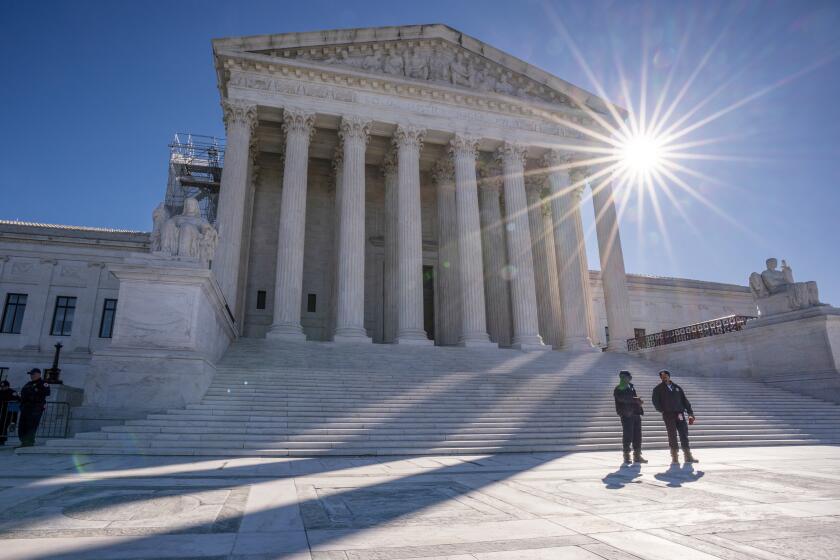A History of U.S. Citizenship
- Share via
1776: Declaration of Independence assails King George III for preventing colonies from naturalizing new settlers.
1790: Naturalization reserved for “free white person[s]” with at last two years residence.
1802: Jeffersonian Republicans repeal 14-year residency mandate breifly imposed by rival Federalists.
1848: Treaty ending U.S.-Mexico War guarantees citizenship to Mexican subjects in new territories, including California. Federal courts later cite treaty as removing racial bars to naturalization for Mexican settlers.
1857: Dred Scott decision holds that a “negro” cannot be a citizen.
1868: Fourteenth Amendment grants citizenship to those U.S.-born, cementing status of most blacks but leaving uncertainty on other minorities.
1882: Chinese Exclusion Act bars Chinese from naturalization.
1898: U.S.-born children of foreign nationals guaranteed citizenship, Supreme Court rules, even if immigrant parents are barred.
1906: Safeguards set for naturalization includes ability to speak and understand English.
1931: Repeal of statute stripping women of citizenship if they marry a foreigner racially barred from becoming a citizen.
1940: Birthright citizenship to Native Americans granted.
1944: Then record 442,000 naturalize amid wartime anxiety; 96% are Europeans, 1 in 4 Italian.
1952: Law amended to say citizenship “shall not be denied or abridged because of race or sex,” ending 162-year legacy of racial bars.
1996: Record of more than 1.1 million people take citizenship oath; Asians and Latinos top list.
1997: Amid charges that ineligible criminals are being naturalized, federal officials move to strip citizenship of 5,000 immigrants with criminal arrest records.*
Sources: U.S. Immigration and Naturalization Service; Ian F. Haney Lopez, “White by Law, The Legal Construction of Race,” New York University Press, 1996; Harvard Encyclopedia of American Ethnic Groups
Sources: U.S. Immigration and Naturalization Service; Ian F. Haney Lopez, “White by Law, the Legal Construction of Race,” New York University Press, 1996; Harvard encyclopedia of American ethnic groups
More to Read
Sign up for Essential California
The most important California stories and recommendations in your inbox every morning.
You may occasionally receive promotional content from the Los Angeles Times.










